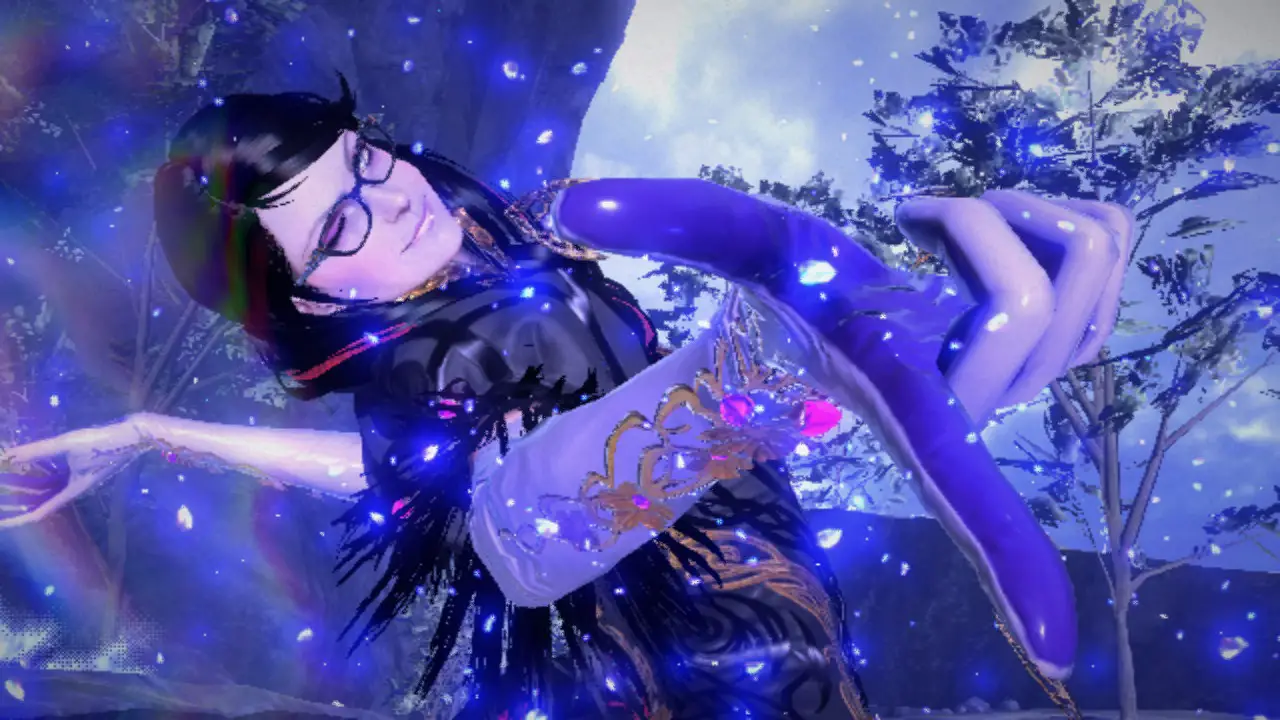
Bayonetta and Jeanne are enjoying their peaceful lives in New York City when a mysterious new enemy appears and destroys the city. According to a feisty new face, Viola, this is the work of the Singularity – a single man who has deemed his universe the only one worthy of existence. He’s on a whirlwind tour of the Multiverse, killing each Bayonetta and her world with his Homunculi, cutting off the realms of Chaos from Paradiso and Inferno. Viola takes Bayonetta to the island of Thule, where ancient Umbra Witches and Lumen Sages watched over and studied the Multiverse, while Jeanne heads off to rescue the only person who can help them: Dr. Sigurd. It’s up to these three Witches to travel around reality, stop the Singularity, and be home in time for caviar.
Bayonetta 3 is the latest Character Action game from Platinum Games starring the titular Witch. The first two games stand out as some of the pinnacle of the genre, with refined, deep combat, amazing music, and even some decent stories. Bayonetta herself brings this all together; she’s delightfully cocky and can effortlessly back up her attitude and sense of style with her trademark weapons of four guns attached to her hands and feet. Each fight is like a dance, pulling off graceful combos while weaving in and out of enemy attacks. Bayonetta 3 changes up the setlist in a lot of ways, and while it greatly succeeds in some regards it’s an abject failure in others.
True to the number, Bayonetta 3 gives you three characters to play as: Bayonetta (A.K.A. Cereza), Viola, and Jeanne. Combat revolves around pressing buttons and moving the sticks occasionally to perform a string of combos for all of them. X is for punches, A is for kicks, Y is for ranged attacks, B is to jump, ZR is to dodge, and ZL summons your demon, which we’ll get to later. Combos involve pressing these buttons in different combinations with different timings to pull off a massive list of moves.
While you could just mash a single button for attacks, the core conceit of the Character Action genre is to look as cool as possible in every fight. The game will rank you accordingly, from Stone medals at the lowest up to Bronze, Silver, Gold, Platinum, and finally Pure Platinum for a flawless battle finished quickly with no damage and a high style score. Meeting this criteria is all about mastering the tools you’re given, but the game does give a lot of leeway this time around. Damage and time taken seem to weigh a bit less than before, and using items to restore your health or dying no longer incurs a penalty. I’m not entirely sure if I like this change yet as a hardcore fan, but it certainly helps newer players get into the game and feel rewarded for playing rather than beating them down until they can stand up properly. This change reminds me a lot of Astral Chain, and this feeling carries over into the rest of the game too.

Going into character specifics, let’s start with Bayo. Her first weapon this time around is Colour My World, a set of four purple guns which will feel familiar yet different to those who played the first two games. It’s not a heavy hitter like Scarborough Fair or as quick as Love Is Blue, but it does take cues from both of those weapons in order to make something new. Scarborough Fair remains my favorite of the three gun sets for now, but Colour My World still presents a solid if basic moveset. You can actually unlock the previous games’ guns if you have Switch save data from both titles, but I restricted myself from using them until I beat the game. Regardless of weapon choice, you can hold the button while attacking to use the secondary effect before continuing your combo, in this case firing a barrage of bullets.
This is also how you use Dodge Offset, the tutorial for which is tucked away in menus so I’ll explain it here. If you’re mid-combo and see an enemy attack coming, your first instinct would be to stop attacking and dodge out of the way, but you can actually continue your attack string through a dodge. Simply press and hold the next button in the string, tap ZR to dodge, and you should see Bayo, for example, continue firing her guns while dodging. This means your combo wasn’t broken and you can continue exactly where you left off. This tactic is key to getting a high score by ensuring your combo chain and score multiplier don’t expire. Although I said it’s simple, it does take some time to wrap your head around and build muscle memory for, so I would recommend practicing it in a loading screen or in Rodin’s new training area.
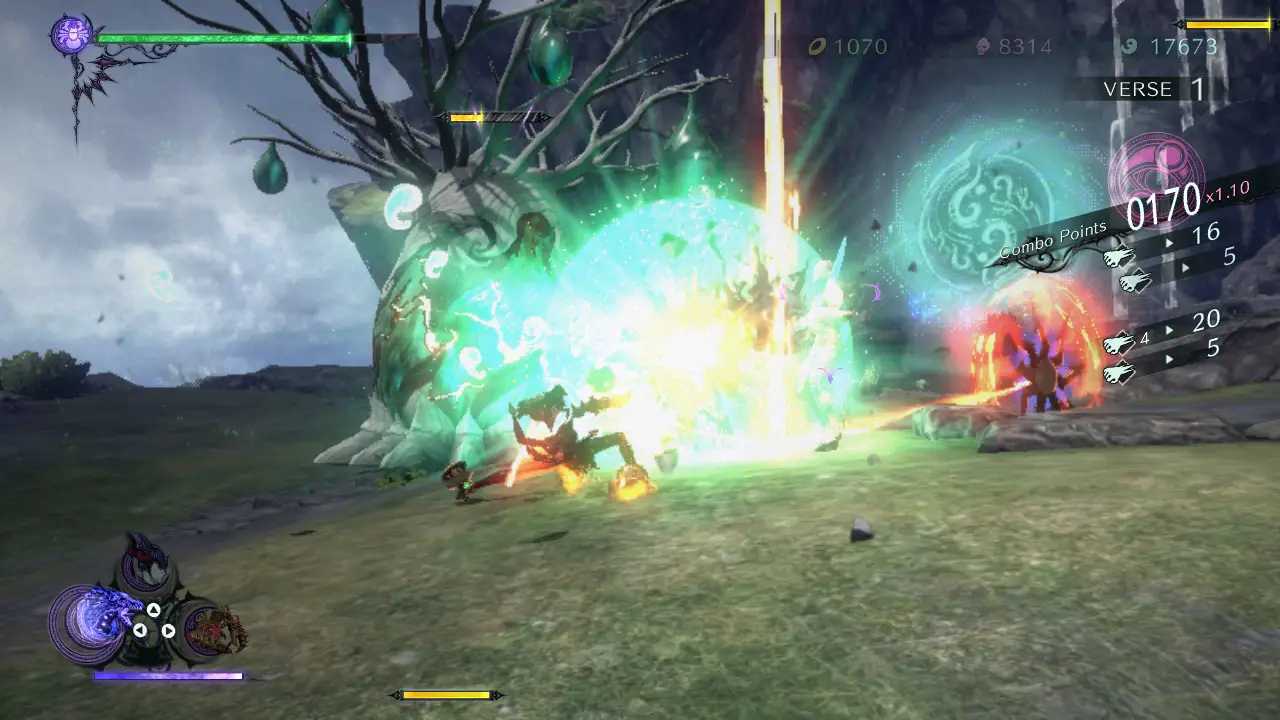
If you just barely dodge an attack with Bayonetta, you’ll activate Witch Time (WT) which slows all enemies down for a moment. This lets you get in a few hits for free, and while you can fight without it, you definitely won’t want to. The rush of adrenaline when you wait until the last moment to dodge is just as thrilling as ever; it just feels good to do on top of being extremely beneficial.
Bayonetta has tons of weapons and demons at her disposal. She can equip two weapon sets at a time, no longer able to mix and match with hands and feet. This does make weapon loadouts feel a bit more restrictive (a third loadout to compensate would have been great), but the moves for each weapon feel fully featured. In particular, I liked the Ignis Araneae Yo-Yo, Ribbit Libido BZ55, Simoon, and Abracadabra. Every weapon also comes with its own demon transformation for finishers and movement. Colour My World lets Bayo take on Madama Butterfly’s form while the Yo-Yos turn her into a fiery spider able to climb walls and swing from webs. These forms are more important than you’d think, so be sure to take your movement options into account when choosing your tools for the job.
Bayonetta can also equip up to three demons at once for the new Demon Slave mechanic. The denizens of Hell don’t want to eat anything not… let’s say “kosher,” and that includes the Homunculi. They need a bit of coaxing to help Bayo (and not eat her instead), so you directly control them with the power… of DANCE. Just like, say it with me, Astral Chain, you summon and control your demon directly by holding ZL and pressing the face buttons as well as R to perform their moves. Doing so will use up your magic meter, and essentially serves as a more interesting and less overpowered replacement for the Umbran Climax mechanic in 2. Your summons don’t have huge move pools and Bayonetta can’t move while controlling them, but they can take the heat off of you for a bit while dealing big damage.
At first, I found this mechanic boring. but there’s actually a lot of interesting combos you can pull off with it. For example, I can summon Madama Butterfly, queue up two punches, release ZL, then join the fray again with both Bayo and Madama attacking at once.
You can upgrade both your weapons and demons in the new skill trees, giving you and your demon slaves new moves. These moves often have standardized inputs, such as B then A quickly or Up-Down-Punch, so it’s a lot easier to pick up and fight well with any weapon or demon. In particular, I really appreciate the gap closer move most weapons have by pressing R twice, and the frog demon’s acid rain from pressing R a few times is great for crowd clearing.
While Jeanne plays exactly like Bayonetta (once you unlock her after beating the game), Viola is quite different. She only has one weapon, a katana, and one demon, Chesire. This makes her playstyle take some getting used to and requires a different mindset. Instead of hands and feet actions, her punch button is standard katana swings while kicks have her throw the sword out a short distance in front of her like a boomerang. Holding a button will also charge the next attack, giving it a larger range and more damage with a fire effect. For ranged attacks, she can throw darts, too. The katana gives her a decently large pool of combos to choose from, but she does technically have another weapon: her fists.

Viola cannot directly control Chesire, he acts on his own while holding ZL. Summoning him also takes away her weapon, so she’s left to fistfight the Homunculi. Unarmed has its own equally large move pool to her katana, giving her a decent suite of attacks. It’s nowhere near as large as Bayo’s with her dozen or so weapons, but it’s still pretty diverse and feels good to use.
Unfortunately, Viola comes with a few frustrating problems, mainly dealing with Witch Time. As a less experienced Umbran Witch, Viola can’t activate Witch Time with dodges. Instead, she needs to parry attacks by pressing R just as an attack would hit her. This sounds fine on the surface, but the timing on this is nowhere near as lenient as Bayo’s dodges. It’s more like having to activate Moth Within with Jeanne by dodging the second the attack connects.
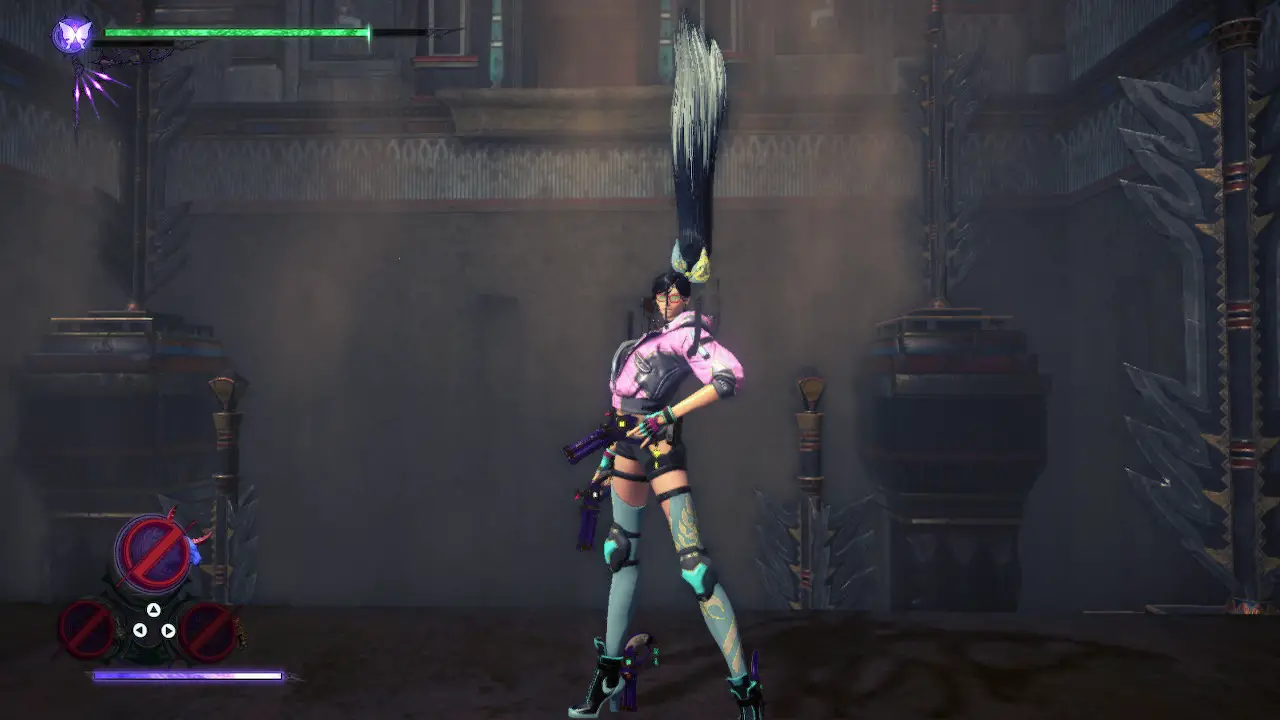
On top of that, Viola’s WT is disgustingly short, mostly lasting less than a second in real time. When her second encounter in the entire game, an optional challenge where enemies only take damage during WT, is basically impossible you know there’s a problem. While the mechanic itself feels good to pull off, the parry window should be more lenient and grant much more WT, and for goodness sake let me parry with my fists. I’d also like to see an accessory that gives her a dodge version of WT, because you simply can’t parry some attacks while you can always dodge them with Bayo.
Remember how I said Jeanne played exactly like Bayonetta? Well, I lied. Kinda. Unlocking her in the post game is just like Bayo (aside from the aforementioned Moth Within), but she has a few stages of her own in the main game. These are 2D platforming and stealth segments, for whatever reason. She can’t really combo or summon demons, so you mostly stick with her guns, All 4 One, and whatever ranged weapons you can find in the stage. There are some funny gags strewn throughout, like fast food collectables and being able to go to the bathroom or take a shower in the middle of a mission, but I found these extras to be more of an obligation than actually fun. They might be more interesting if you could engage with them on your own terms, but these are required to interact with every 3 or so normal stages to advance the plot. On top of that, once you unlock her for normal play, you can only select Jeanne in two stages, when in the past she could play through the entire campaign.
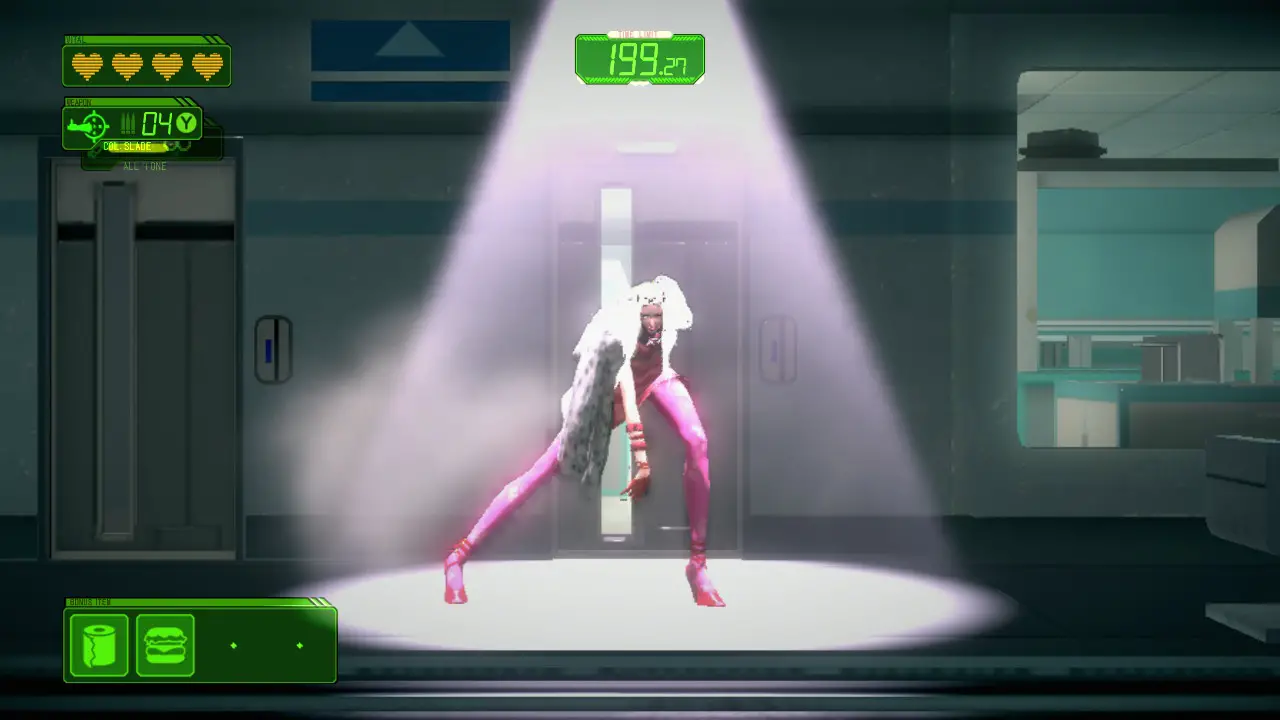
For the third time in a row, Platinum has done Jeanne dirty. Girl just can’t catch a break. Hopefully there’s some DLC or a patch so we can choose anyone in any stage.
Jeanne being done dirty finally brings us to the story. Hoo boy. The story. Bayonetta has never really been about the plot, with the real game beginning once you have all your weapons and upgrades to go back through the campaign aiming for Perfect Platinums. Bayonetta 3, however, may just be a much, much better game if you skip every single cutscene and ignore any and all dialogue from the start. It’s that bad.
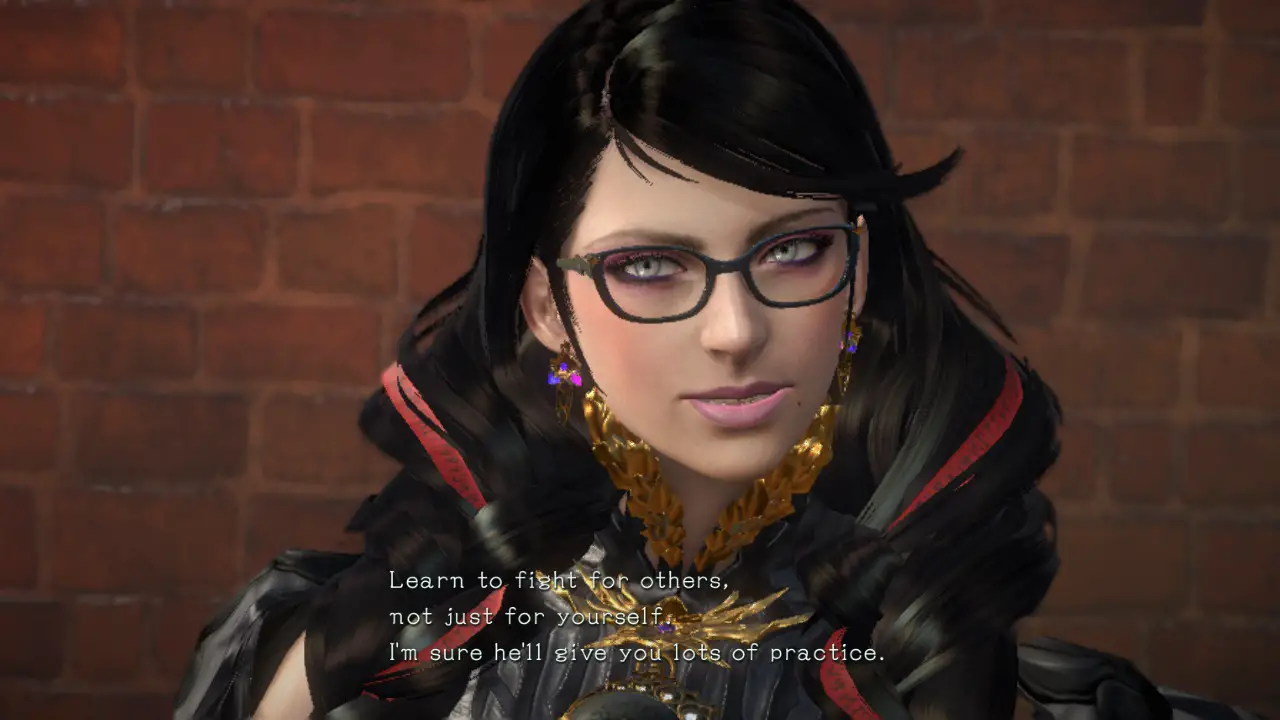
Bayonetta and Jeanne feel wildly out of character for the entire game and it only goes further off the rails and to the moon in the ending. There’s also a lot less of the trademark camp the series is known for, opting for a more serious tone, since you see other Bayonettas die in every universe you visit. There are some funny moments, but they’re mostly stacked right at the start and right before the “off the rails” ending. I think a more serious story could work, but in no universe could I imagine Bayonetta doing a lot of the things she does here. I’m not just speaking as a fan here either, taken on its own, the story is still bad with poor writing, pacing, and no explanations or character development.
Let’s use Viola as an example, the contentious newbie. She’s supposed to be Bayonetta’s polar opposite. Where Cereza is cool headed and calm, Viola feels everything intensely and is clearly in way over her head. I actually found this to be a fun contrast in gameplay. She curses a lot and will freak out whenever she takes damage or her guard is broken. When you’re doing well, however, she’s got the biggest ego on the planet. She’s a lot of fun aside from a few cringe-worthy moments that serve no purpose in either gameplay or story, like when her butt’s on fire and you have to run for water. However, in no way does the game earn the “passing of the torch” it so desperately wants you to think it pulled off in the ending. She’s best as Bayonetta’s opposite, not her replacement.

If you listen closely to the music, you’ll find where the character development was supposed to be reflected. Bayonetta’s two songs, Al Fine (Whispers of Destiny) and Moonlight Serenade are both pretty good. I prefer the latter greatly, although the lyrics seem to present her as a damsel in need of saving – which is exactly what the game turns her into.
Viola’s theme, Gh()st (my favorite song in the game), meanwhile, could have reflected her struggle to stand on equal footing with Bayonetta and her desire to be taken seriously by her mentor figure. Instead of stepping up to the plate when the chips are down, both she and Bayonetta fail in a few win in the fight lose in the cutscene moments. I don’t want to spoil anything if you still want to go in without knowing what happens, it’s common courtesy after all, but I’m being entirely serious when I say these events almost ruined Bayonetta entirely for me. Even retroactively.
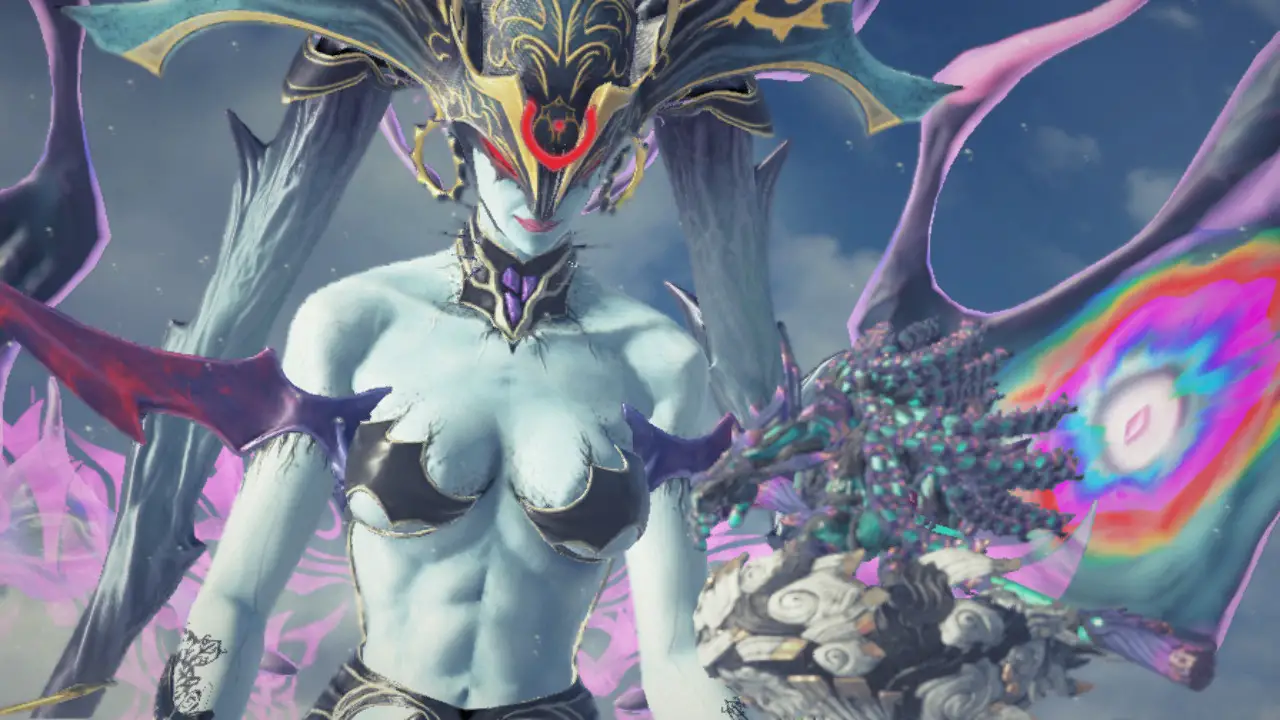
While I gripe about the affront to god that is the story, the music is still fantastic and some of the best in the series yet, even the non-lyrical tracks. Those are the ones that will be stuck in your head, but the instrumentals and orchestrated pieces are great too. If nothing else, Bayonetta 3 is a joy to play and hear. Jenifer Hale does an admirable job as the new voice of Bayo, although she’s just not British enough, in my opinion.
The visuals, however, are another point of contention. The game may target 60 frames per second (fps), but it only felt like the game actually reached a stable framerate in certain cutscenes where the camera was very far away from a small amount of objects. Those cutscenes are also only at 30 fps and often massively compressed with ugly ghosting on motion. I’m not Digital Foundry, but I say the game should run smoother than this to not affect gameplay.

Visually, I also find it much worse than Bayonetta 2, a game developed for the Wii U. There are a lot of grays and greens in the stages, which makes this look a lot more like the original game on 360. Bayonetta 2 took place in a city with mostly white architecture, but it was still vibrant with color everywhere. 3 does attempt some color variation, but it all just kinda blends into a solid gray. Textures look low resolution too, so it’s incredibly weird that two games on the exact same system in the same series look and run much better than the shiny new entry where they should have mastered the hardware. Granted, the original two weren’t MADE for Switch, they’re ports, but even Astral Chain at 30 fps plays smoother.
This is especially apparent in the copious amount of set pieces in the game, and I use copious derogatorily here sadly. I’m not opposed to some stupid Platinum flair, and none of these become as frustrating or long as, say Route 666 in the first game, but there’s just way too many.
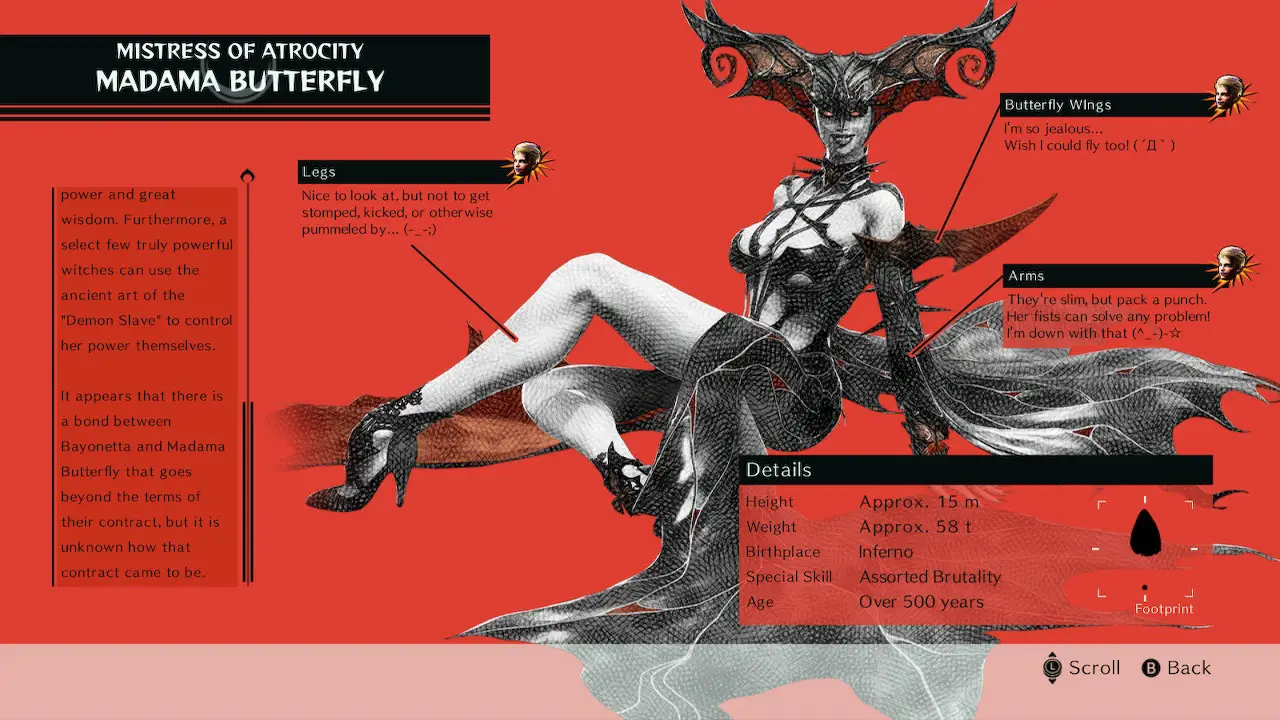
This may not be objectively true, but it at least feels like you spend less than half the game actually playing as Bayonetta. Just when you’re getting into a groove with the combat and reaching higher ranks, you’re shoved into a Jeanne stage or a chase segment where you’re riding on a demon avoiding obstacles. The worst of these are the “boss fights,” which try to ape fighting games or shooters or something. These are all super slow and go on way too long. Simply put, they’re not fun in the slightest and wear out their welcome easily.
Bayonetta 3
Good
Bayonetta 3 has a lot of issues, especially in terms of story, but is well worth playing for the core combat. While the game seems to be doing its best to get you away from that, once you’re fighting, there’s nothing like it out there.
Pros
- Incredibly deep combat
- Tons of weapons and demons
- Viola is a lot of fun
- Great music
Cons
- Horrendous story
- Too many set pieces
- Poor performance
- Some consistent issues with combat
